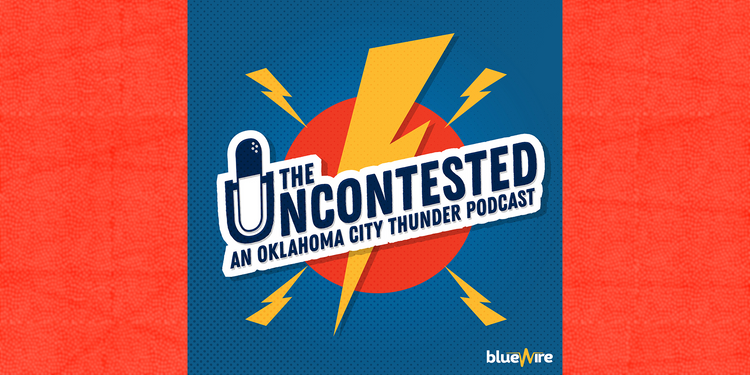Film Study: The Thunder’s new crunchtime set

Lost in all this Russell Westbrook noise was that the Thunder did just enough in the last four minutes against Memphis to hold on for a really nice win. Which if you recall, was something of a chore during the playoffs last season.
In both the Dallas and Memphis series, Oklahoma City’s halfcourt sets basically devolved into Westbrook trying to force a pass to Kevin Durant while KD held off Shawn Marion for 18 seconds and then after that inevitably failed, Westbrook trying to create something on his own.
In the past, the Thunder have primarily run two sets: 1) Westbrook and Durant in a screen-and-roll/slip play on the wing and 2) KD isolating at the top of the key with Westbrook trying to feed the ball so KD can go one-on-one with his man.
In conclusion, didn’t work so great. The has been a lot of pressure on Scott Brooks and his staff to get more creative with his two stars and figure out what to do in those later stages. You want KD with the ball and taking the shot, but it’s complicated. There’s a reason Westbrook was forced to go rogue so much. You don’t think Brooks wanted KD taking those shots? Thing is, he’s got to get it in an area he can score and he’s got to get it somewhere we he doesn’t have to dribble a lot to get his own shot.
So against the Grizzlies with the game getting tight, the Thunder broke out a new little set and ran it three straight times with pretty successful results.

The play starts simple enough. Westbrook drops it to Harden, which initializes the motion, with Durant hovering by Perk. By all appearances, the Thunder are going to run KD baseline off a double screen and have Harden feed him either in the post or off a curl.

Instead, OKC does something interesting. Russell Westbrook sets the screen for Durant. A twist. Harden, a great passer, is there to feed the ball to Durant, which is better than Westbrook doing it. And on top of it, with Harden on the wing, it sets up a possibility for a screen-and-roll with Harden, which is something OKC likes to do.

Now look where KD’s got the ball. He could’ve taken a jumper right there (Westbrook’s screens were really good, actually), but he’s got the ball at the free throw line one-on-one with Rudy Gay. That’s a spot where KD is lethal. The first time, Durant crossed him and scored on a runner. Next time, the defense collapsed to double and he kicked out to a wide open Serge Ibaka who missed a make-able jumper. Third time, Durant hit a ridiculous fadeaway over Gay.
What this set is contingent on is KD doing ridiculous things. Luckily, he’s entirely capable of it. That’s what you want in a go-to finisher. A guy that when he gets the ball in a spot, he can finish. I’ve often wondered why the Thunder didn’t have something like the Celtics do when they get the ball to Paul Pierce isolated on the elbow. Well, here it is.
Defenses will adjust to this. They’ll collapse, run defenders at KD or he’ll just miss. But as you can see with the spacing, he’s got options. He can kick to Ibaka. He can hit a cutting Westbrook. He can swing it back to Harden. The spacing is there and Durant’s got the ball in a good working area. It’s essentially the same idea as the top of the key iso, except instead of KD trying to hold off a defender pushing on him (which he doesn’t do well, as he always gets moved out), Durant gets a catch with a little breathing room.
Kudos to Scott Brooks and his staff for this one. Simple, quality set that gets the ball to Kevin Durant, which is always a good play.

